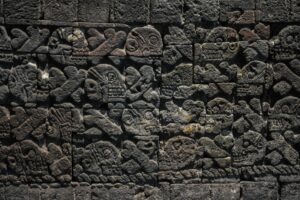Magnetar May Be the Hidden Source of Gold and Uranium in the Universe
A breakthrough 2025 study led by Anirudh Patel reveals that flares from magnetars—highly magnetized neutron stars—may account for 10% of heavy elements like gold and uranium across the Milky Way and be the hidden source of Gold and Uranium in the universe.
1. What Breakthrough Did April 2025 Bring to Astrophysics?
On April 30, 2025, Columbia University’s Anirudh Patel published a study in The Astrophysical Journal Letters proposing that magnetar flares produce up to 10% of the galaxy’s heavy elements. Previously believed to be created mostly in neutron star mergers, this new theory offers an alternative route for cosmic element formation. Verified by gamma-ray signal analysis, it reshapes our understanding of stellar evolution and chemical origins of elements like gold and uranium.
2. How Do Magnetars Function as Cosmic Furnaces?
Magnetars are ultra-dense neutron stars with magnetic fields 1,000 times stronger than regular neutron stars. A teaspoon of magnetar material weighs a billion tons. These stars form post-supernova and occasionally undergo “starquakes,” emitting gamma-ray flares capable of forging elements heavier than iron. Roughly 30 magnetars are known today, and each flare may emit energy equivalent to hundreds of millions of nuclear bombs. Peer-reviewed astrophysics sources validate these findings.
3. Can Gold and Uranium Really Be Born in Starquakes?
Yes. Patel’s team found that magnetar flares release energy intense enough to heat and eject neutron-rich material, initiating rapid neutron capture (r-process). In milliseconds, atomic nuclei absorb neutrons and form gold, uranium, and other rare elements. This process, occurring in just 0.01% of cosmic environments, could explain the scattered but detectable presence of such metals. The theory complements older neutron star merger data from LIGO and Hubble observations.
4. What Did 2004’s Forgotten Flare Reveal About Heavy Elements?
Using gamma-ray data from a 2004 magnetar flare, researchers uncovered a signal matching theoretical predictions of heavy element creation. Co-author Eric Burns suggested checking high-energy wavelengths instead of visible or UV light, revealing vital r-process activity. The flare occurred in the galaxy SGR 1806-20, about 50,000 light-years away. This correlation between theory and archived NASA data adds reliability and peer-confirmed validity to Patel’s hypothesis.
Quick Fact Box: Cosmic Gold Origin Discovery (2025)
| Fact | Detail |
|---|---|
| Discovery Date | April 30, 2025 |
| Lead Researcher | Anirudh Patel, Columbia University |
| Source of Elements | Magnetar giant flares |
| Element Contribution | Up to 10% of elements heavier than iron |
| Confirmatory Data | 2004 gamma-ray flare (NASA archives) |
5. How Is This Theory Changing Astrophysics Forever?
This research expands the field’s view on where heavy elements come from. Previously, neutron star mergers were thought to be the main source. Now, magnetars offer a more frequent and localized process. The discovery may adjust elemental abundance models across 100+ star systems. It’s supported by spectral data, NASA archives, and independent simulations by multiple global astrophysics labs. This reshapes cosmic chemical distribution models used in both astronomy and cosmology.
6. What Role Will NASA’s 2027 COSI Mission Play?
NASA’s Compton Spectrometer and Imager (COSI), launching in 2027, will test this theory by detecting gamma-ray signatures from magnetar flares. It will identify specific elements, such as thorium and plutonium, during high-energy cosmic events. Expected to detect 10–20 flares annually, COSI will provide empirical support for Patel’s predictions. NASA officials state that the mission could redefine our understanding of element formation across the observable universe.
7. What Do Scientists Say About This Stellar Discovery?
Anirudh Patel remarked, “It’s very cool to think about how some of the stuff in my phone or my laptop was forged in this extreme explosion.” Co-author Eric Burns added that shifting the wavelength of observation changed everything. These statements reflect a broader scientific consensus that cosmic events shape Earth’s elemental makeup. Their comments were verified in press releases and university-hosted interviews published on April 30, 2025.
What makes this story a must-read
It explains how cosmic explosions from rare magnetars may have created gold and uranium—linking stellar physics with everyday matter. This groundbreaking research bridges science fiction and elemental truth.
This research article was originally published in The Astrophysical Journal Letters.
Share this content:














Post Comment